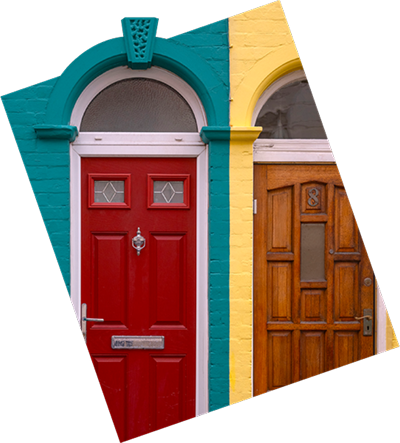Subsidence and your home insurance.
Learn how to spot subsidence in your home. Find out what causes it, how to reduce the risk of it happening, and what’s covered with Tesco Home Insurance.
Published: 25 November 2025

Learn how to spot subsidence in your home. Find out what causes it, how to reduce the risk of it happening, and what’s covered with Tesco Home Insurance.
Published: 25 November 2025

If your home’s affected by subsidence, it can be a serious problem. It happens when the ground beneath your house starts sinking, causing structural damage to your home. And that can mean costly repairs - especially if you don’t have home insurance.
Cover for subsidence depends on your policy, so it’s a good idea to check your buildings insurance. It's also worth carrying out some simple checks around your home. That’ll help you to spot any problems and make sure you’re covered if something goes wrong.
Subsidence usually happens when the ground around your home becomes very dry and starts to shrink, pulling the building down with it. The foundations get pulled out of shape, making the walls and floors move and become unstable. So it can cause serious damage to your property.
Here are some of the main causes of subsidence:
Trees and shrubs: the roots of trees and shrubs can cause problems if they dry out the soil too much. Especially if they’re planted too close to your home.
Leaking drains or water mains: if the ground becomes very soft from a lot of water, it might not be strong enough to support your home.
Clay soil: this kind of soil shrinks and cracks during hot, dry weather. If it doesn't recover as the temperature changes, the ground around your home could start to move.
Mining: homes built on old coal mines could be prone to subsidence if the material used to fill in the mine collapses beneath them.
After the summer heatwave this year, one of our Home Insurance customers got in touch to ask if hot weather can cause subsidence.
"A long spell of hot and dry weather can dry out clay-rich soil, causing it to shrink. If your home’s built on this type of ground, the movement of the soil can lead to the foundations of your house shifting. That’s what’s known as subsidence."
Standard home insurance policies usually cover damage to your home caused by subsidence. But there might be some exclusions you need to be aware of.
As a rule, it’s always best if you spot the signs early - and let your insurer know if it’s happening to you.
With Tesco Home Insurance, we’ll cover your home for:
Be aware, though, that these are not all the same thing. Subsidence is different from:
Heave - when the ground beneath your house moves upwards due to the soil expanding.
Landslip or landslide - when the ground beneath your house slips down a slope, and your house slides with it.
Settlement - when the weight of your house moves it downwards into the earth.
For full details of our Buildings cover, please see the policy documents.
Settlement is normal for both new-build properties and recent property extensions or additions. In fact, it’s often to be expected and usually happens not long after a house has been built. Subsidence, on the other hand, can happen to buildings of any age, for different reasons.
To help you stay ahead of any potential problems, here’s how to check for the main signs of subsidence in your home.
Keep an eye on any cracks in your walls. Especially ones that appear suddenly and grow very quickly, compared to normal, ‘hairline’ cracks that you might find around your doorframes.
Cracks caused by subsidence will usually:
If you’ve got an extension, also pay attention to cracks appearing where the extension is joined to the main part of your house.
If your doors or windows won’t open or close properly, they might be misaligned. And that could be a sign of movement in the structure of your home.
If you spot any of the signs, and you’re concerned you might have subsidence, it’s probably worth investigating further. If you get a structural survey done by a qualified professional, they’ll be able to check if you’ve got subsidence and let you know what to do about it.
Large trees or shrubs close to your home can draw moisture from the ground. Even more so in clay-rich soil, which can make the ground shrink and cause subsidence.
The best advice is not to plant trees or shrubs too close to your house. For trees or shrubs already growing in your garden, make sure you prune them regularly and keep a close eye on them. You might have to remove anything that’s spreading too close to your foundations.
Leaking drains or pipes can wash away soil beneath your home, weakening the ground. Make sure you keep your pipes, gutters and drains well-maintained and free from blockages.
If you have any questions about your cover, or need to make a claim, we’re here to help.
Tesco Home Insurance is arranged and administered by Tesco Insurance and is underwritten by Tesco Underwriting Ltd.
You'll find complete details of the cover, monetary limits, exclusions, excesses and terms in our policy documents.
Find the right cover for the place you call home. Choose Tesco Home Insurance and save money with your Clubcard.